Exploring One Piece: A Deep Dive into the Iconic Anime
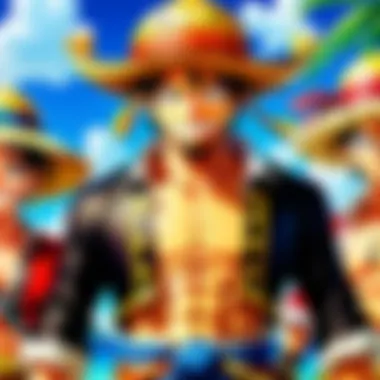

Intro
'One Piece' stands as a pillar in the world of anime and manga, captivating audiences worldwide since its debut in 1997. The series, created by Eiichiro Oda, intricately weaves together adventure, camaraderie, and complex narratives that resonate deeply with fans. It has become more than just a show; it is a cultural phenomenon that has influenced generations of viewers and creators alike. Understanding the essence of 'One Piece' requires delving into its carefully crafted storyline, multi-faceted characters, and the underlying themes that drive the narrative forward.
This article aims to provide an all-encompassing exploration of 'One Piece', focusing on various elements that contribute to its iconic status. Through this analytical lens, both veteran fans and newcomers will gain a richer appreciation of the show's craftsmanship and its impact on the anime genre as a whole.
In this exploration, we will begin by reviewing key episodes, analyzing significant events, and highlighting notable character arcs. We will also contrast differences between the anime and manga adaptations to discern how each medium portrays the story. Additionally, we aim to illuminate character spotlights, providing insights into their development and relevance in the ongoing saga. Lastly, we will discuss industry trends and updates related to 'One Piece', ensuring readers are well-informed about the latest happenings within this expansive universe.
Join us as we embark on this journey through the waters of 'One Piece', where every episode, character, and moment contributes to this extraordinary saga.
Foreword to One Piece
The Introduction to One Piece serves as a crucial starting point for understanding the immense significance of this anime. Recognized globally, One Piece is not just a series; it is a cultural phenomenon that has influenced many facets of the anime and manga industry. Insights into its narrative depth, character evolution, and thematic richness provide a framework for appreciating its lasting impact. This section aims to encapsulate the essence of what One Piece represents in contemporary media.
Overview of the Series
One Piece, created by Eiichiro Oda, first appeared in 1997. The series follows Monkey D. Luffy and his crew as they sail the unpredictable seas in search of the ultimate treasure—the One Piece. This treasure is said to grant its owner the title of the Pirate King, a goal that motivates countless characters within the narrative.
One Piece is characterized by its intricate world-building, diverse character rosters, and multi-layered storytelling. Each arc within the series introduces new settings and challenges, enhancing the lore that surrounds its universe. The series is notable for its balance of comedy, drama, and action, allowing it to resonate across various demographics.
Luffy’s journey from a naive boy with big dreams to a formidable pirate leader encapsulates themes of friendship, determination, and adventure. Throughout the episodes and chapters, viewers and readers are treated to a mixture of humor and emotional depth that elevates the storyline beyond typical shonen tropes.
Origins and Creation
The creation of One Piece stands out as a remarkable endeavor. Eiichiro Oda drew inspiration from his childhood adventures and love for pirates. As a young boy, Oda wanted to be a manga artist, and his obsession with stories involving treasure and adventures fueled his creativity.
Initially serialized in Shueisha’s Weekly Shōnen Jump, One Piece quickly gained popularity, becoming a central pillar of the magazine. Oda's unique art style, coupled with compelling narratives, enabled it to attract a formidable audience. Over time, Oda developed deep, interconnected storylines, ensuring that each character not only had their own goals but also played significant roles in the overarching plot.
Oda's commitment to storytelling has led to numerous accolades, including records for manga sales. The blend of humor, drama, and thrilling escapades in One Piece signifies its lasting appeal. It is not merely a tale of pirates but a saga of dreams, ambitions, and the human spirit's resilience. This foundational understanding of One Piece sets the stage for a more in-depth exploration of its characters, themes, and cultural implications.
The Journey of Monkey D. Luffy
The story of One Piece revolves around the central character, Monkey D. Luffy. Luffy's journey is not just about adventure. It embodies themes of resilience, friendship, and the pursuit of dreams. His character plays a crucial role in the narrative, and understanding him is vital for grasping the overall essence of the series.
Character Profile
Monkey D. Luffy is the main protagonist and captain of the Straw Hat Pirates. With his signature straw hat, Luffy symbolizes freedom and adventure. His character is marked by his indomitable spirit and unwavering determination. Luffy possesses the powers of the Gum-Gum Fruit, which allows him to stretch his body like rubber. This ability not only adds a unique aspect to his fighting style but also emphasizes his versatility in overcoming obstacles.
Luffy's personality radiates positivity, which attracts friends and allies along his journey. He believes in loyalty and standing by his crew, showcasing a deep understanding of the concept of camaraderie. The audience connects with him through his vulnerabilities and strengths, making him a relatable character despite his over-the-top ambitions.
Luffy's Goals and Challenges
Luffy's primary goal is to find the legendary treasure known as the One Piece. This treasure is believed to grant the title of Pirate King to its owner. For Luffy, becoming the Pirate King is not merely a title; it represents ultimate freedom. Throughout the series, Luffy faces numerous challenges that test his ideals and resolve.
Some notable challenges include:
- Powerful Enemies: Luffy frequently encounters rival pirates and formidable government forces. Each battle forces him to grow stronger and rethink his strategies.
- Internal Conflicts: Within his crew, there are moments of tension and doubt. Luffy's ability to unite his crew despite differences is a significant aspect of the series.
- Moral Dilemmas: Luffy often faces situations where he must choose between personal goals and the well-being of his friends or allies. His decisions reflect the complex nature of justice and morality in the world of One Piece.
Understanding Luffy's journey provides insight into the themes of human connection and ambition. His character arc emphasizes that the path to achieving dreams is often fraught with difficulties, yet it is this very journey that enriches the experience of life.
Supporting Characters in One Piece
Supporting characters are a critical aspect of the narrative and thematic development in One Piece. These individuals, each with their distinct personalities and backstories, add depth to the tale of Monkey D. Luffy and his quest for the One Piece treasure. They provide essential emotional and motivational support for the protagonist, serve as foils to highlight key character traits, and often represent broader themes of friendship, ambition, and morality. Their growth mirrors that of Luffy, showcasing parallel journeys that enrich the series. Such complexity is what makes One Piece much more than just a story of pirate adventures; it is a rich tapestry of interconnected lives.
Crew Members and Their Roles
The crew members of the Straw Hat Pirates are diverse, bringing a myriad of skills and perspectives to the group. Each character plays a specific role that underscores their unique abilities and how these contribute to the crew's objectives.
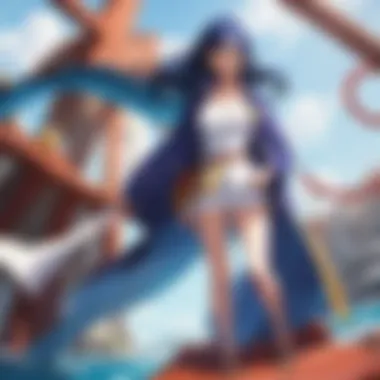

- Monkey D. Luffy: The captain whose unyielding spirit inspires those around him.
- Roronoa Zoro: The swordsman, serving not only as a protector but also as a driving force in fights.
- Nami: The navigator, known for her intelligence and ability to strategize the crew’s journey.
- Usopp: The sniper, who provides comic relief but also compelling heroism through his tales and inventions.
- Sanji: The cook, whose skills extend beyond the kitchen, embodying loyalty and charm.
- Tony Tony Chopper: The doctor, representing the nurturing aspect of the crew.
- Nico Robin: The archaeologist, whose knowledge of history adds layers to their adventures.
- Franky: The shipwright, infusing creativity into the crew’s navigation and battles.
- Brook: The musician, who enriches the crew's spirit through performance while also having combat skills.
- Jinbe: The helmsman, providing wisdom and experience that greatly benefit the crew.
Each member not only has their own goals but also contributes to the shared dreams of becoming closer as a family, revealing essential themes of unity and mutual support.
Antagonists and Conflicts
Antagonists in One Piece are not just barriers but serve to challenge the Straw Hat Pirates fundamentally. They bring conflicts that test the crew's resolve, ethics, and growth. Key antagonists often embody contrasting ideals, which makes their encounters pivotal for character development.
- Crocodile: His schemes revealed the underbelly of power and corruption in the world of One Piece.
- Donquixote Doflamingo: Represented manipulation and control, leading to significant character arcs for several crew members.
- Kaido and Big Mom: Titans of power that not only threaten the crew but symbolize the overarching conflicts of freedom versus tyranny.
- Admirals and Marines: They personify the law and order perspectives, leading to existential questions regarding morality.
These conflicts do more than challenge heroes; they explore the consequences of ambition and the cost of dreams. The antagonists' goals often intersect with those of the protagonists, leading to riveting encounters that reflect the complexities of human nature.
The intricate relationships between protagonists and antagonists depict the enduring struggle between idealism and realism in pursuit of one’s dreams.
In summary, the supporting characters within One Piece play multi-dimensional roles that enhance the narrative and deepen thematic explorations. Their individuality contributes significantly to the overall richness of the series, making it a treasured part of anime culture.
Thematic Analysis of One Piece
Thematic analysis in One Piece reveals critical dimensions of storytelling that elevate the series beyond mere entertainment. By examining fundamental themes such as friendship, freedom, and morality, we appreciate how they shape the characters and narrative arcs. This analysis not only invites a deeper understanding but also highlights the cultural resonance of those themes in a global context.
Friendship and Loyalty
Friendship is a cornerstone of One Piece. The relationships among crew members exemplify trust, camaraderie, and loyalty. Monkey D. Luffy, the protagonist, assembled a diverse crew, each representing unique backgrounds and abilities. Their bonds exemplify emotional depth, making the Straw Hat Pirates not just a group of adventurers but a family. This theme cultivates a sense of belonging and mutual support that resonates with viewers. Friendship in One Piece transcends challenges, showcasing how allies uplift each other in dire situations.
"Friendship is built on shared challenges and unwavering loyalty."
The moment when crew members risk their lives for one another reinforces this principle. Their loyalty is tested through various arcs, showing that true friends are those who stand by each other, regardless of the odds. This portrayal of friendship also reflects Japanese cultural values, where social bonds and mutual support are paramount.
Freedom and Adventure
Freedom is deeply embedded in the ethos of One Piece. Luffy's quest to become the Pirate King is not just about personal ambition but signifies the pursuit of freedom—freedom from oppression and control. Each island visited by the crew encapsulates diverse ideals of liberty and autonomy. The struggles of characters against tyrannical rule mirror real-world issues of governance and personal rights, prompting viewers to reflect on the significance of freedom in their own lives.
Adventure serves as both a narrative device and thematic motif, encouraging exploration and discovery. The world of One Piece is vast and filled with unique cultures and challenges. The crew's relentless journey embodies the spirit of adventure, emphasizing that life should be embraced with curiosity and courage. Luffy often reminds his friends that the journey itself is as crucial as the destination, reinforcing the idea that freedom is found in the act of living fully in the moment.
Morality and Justice
Morality is complex in One Piece. Characters grapple with ethical dilemmas that challenge black-and-white perceptions of right and wrong. The series deftly explores the nuances of justice, often through the lens of various characters representing different moral philosophies. For instance, while the World Government presents itself as a force for order, its actions frequently reveal corruption and abuse of power.
Luffy and his crew frequently encounter injustices, compelling them to act against oppression. The different paths of antagonists often reflect their motives and circumstances, offering insights into the motivations behind their actions. This allows the viewer to contemplate the nature of justice and the factors that influence moral decisions. Ultimately, One Piece stays true to the belief that justice should serve the oppressed rather than maintain the status quo.
By dissecting these thematic elements, One Piece creates a rich narrative landscape where viewers can explore their values and beliefs. Understanding these themes enhances the overall appreciation of the series, establishing One Piece as a remarkable example in the anime landscape.
Narrative Structure and Story Arcs
The narrative structure and story arcs of One Piece are fundamental to understanding its storytelling prowess. Each arc contributes to the larger narrative, ensuring continuity while also facilitating character growth. One Piece is celebrated for its intricate plots that often intertwine with themes of friendship, freedom, and adventure. The balance between episodic and overarching storylines engages the audience throughout the series.
This deep dive into the narrative elements helps fans appreciate not just the surface level of the adventures but also the profound emotional and moral dimensions present within the story. Importantly, the arcs provide a unique way of developing complex characters, allowing for a rich exploration of their motivations and relationships.
Overview of Major Arcs
One Piece consists of various distinct arcs, each showcasing different locations, characters, and central conflicts. Key arcs include:
- East Blue Saga: Introduces the primary characters and sets up Luffy's dream to find the One Piece.
- Alabasta Saga: Focuses on themes of justice and governance, where Luffy and his crew confront Crocodile.
- Water 7/Enies Lobby Saga: Highlights betrayal, loyalty, and the depth of crew relationships as they confront CP9.
- Dressrosa Saga: Delivers a politically charged narrative, emphasizing the importance of freedom in a tyrant-ruled land.
- Wano Country Arc: A pivotal arc that ties various storylines together, showcasing themes of honor and rebellion.
Each of these arcs is not only crucial to character development but also enriches the world-building of One Piece. Together, they construct an expansive universe filled with lore and intricate relationships.
Character Development through Arcs
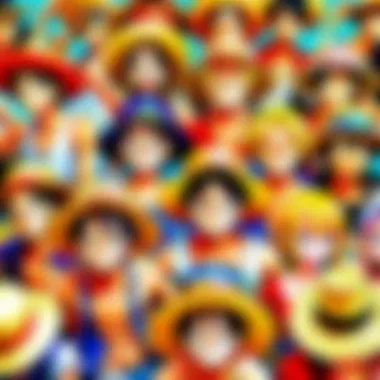
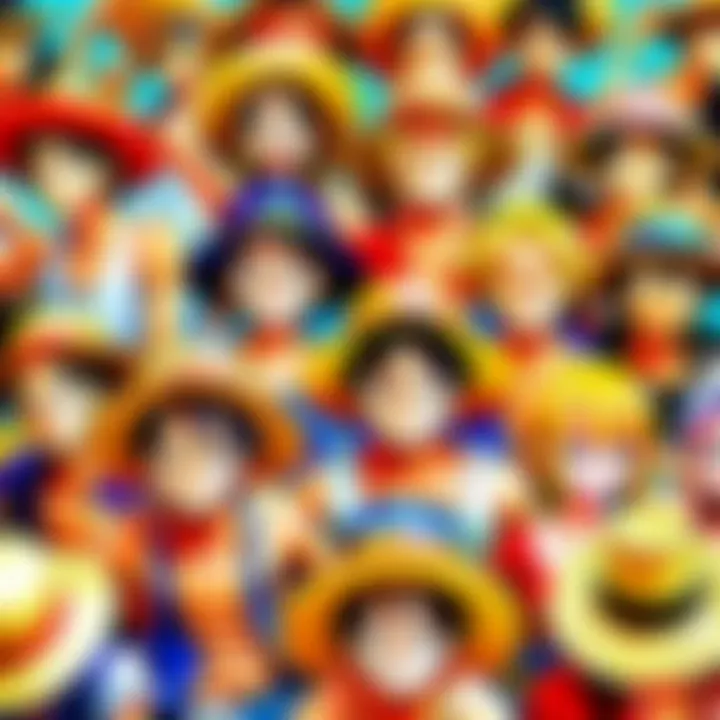
Character development is another vital aspect of the narrative arcs in One Piece. As the story progresses through different arcs, we see significant growth in key characters, particularly Luffy and his crew. Each arc serves as a crucible, testing their resolve and revealing deeper layers of their personalities.
Consider the transformation of characters like Zoro, who evolves from a swordsman seeking strength to a loyal first mate willing to sacrifice everything for his friends. Similarly, Nami's journey from a solitary thief to a valued crew member signifies the themes of trust and belonging.
Character arcs are essential in demonstrating how experiences shape individuals and their relationships within the crew.
The arcs also introduce complex antagonists who serve as foils to the main characters, prompting growth and forging strong resolutions. For example, Doflamingo's impact pushes the Straw Hat crew to confront their ideals and strength directly.
Artistic Style of One Piece
The artistic style of One Piece is a fundamental aspect of its identity. It encompasses not only the vibrant visuals but also the way these visuals express the themes and character essence within the series. The unique character designs and imaginative settings create a rich tapestry that draws viewers into Luffy’s world. This section unveils the importance of character design and world-building, demonstrating how they contribute to the overall narrative.
Character Design
One Piece is known for its distinctive character designs. Each character is visually striking and often exaggerated, highlighting specific traits that align with their personality or role in the story. Monkey D. Luffy, with his straw hat and carefree demeanor, symbolizes freedom and adventure. His design reflects his youthful spirit and determination.
Design choices are not mere aesthetics. For example, Sanji’s sleek appearance contrasts with the roughness of Zoro’s demeanor. This variety enriches interactions and character dynamics. Furthermore, the diverse range of body types, styles, and costumes underscores a key takeaway: Everyone has a place in this expansive world.
The world of One Piece is populated with a vast array of characters, from the noble to the grotesque. This variety is essential in creating engagement and attachment for viewers. It creates a bond between the audience and the characters, as viewers can see parts of themselves reflected in these designs.
World-Building and Settings
World-building in One Piece is incredibly comprehensive. The series transports viewers through myriad locations, each with its own culture, geography, and history. From the vast oceans to the bustling cities, every setting serves a purpose. The islands visited by the Straw Hat Pirates are not mere backdrops but are integral to the storyline and character development.
The vibrant, detailed settings enhance the adventure aspect of the anime. For example, the Fish-Man Island dives deep into themes of race and acceptance, while Dressrosa introduces a vibrant culture intertwined with issues of tyranny and freedom. Each location adds depth and teaches valuable lessons, making the world inherently immersive.
In summary, the artistic style of One Piece is not just about graphics; it shapes the viewer’s understanding and connection to the narrative. The interplay between character design and world-building offers an enriching experience that elevates the storytelling.
"The magic of One Piece lies in its ability to blend distinct visual elements with complex themes, making it a hallmark of modern anime."
The remarkable creativity evident in One Piece encourages viewers to appreciate not just the story that unfolds but also the artistry that breathes life into it. This makes the anime a staple study for those who uphold a keen interest in the nuances of anime aesthetics.
Cultural Impact of One Piece
The cultural impact of One Piece is immense. This series not only entertains but also shapes the anime landscape. It creates a community around it, influencing both fans and creators. The themes and characters resonate well with audiences, leading to a lasting legacy. Understanding this aspect is essential in appreciating why One Piece remains relevant even after many years.
Influence on Anime Industry
One Piece has significantly influenced the anime industry. It has set benchmarks for storytelling and character development. Many anime show rely on elements established by this series. These include rich narratives and diverse character arcs. The series runs for more than two decades without losing its charm.
Moreover, its commercial success inspires creators to push boundaries. One Piece proves that long-term storytelling can engage audiences successfully. This proves you do not always need short seasons to attract viewers. As a result, it helps develop major platforms in the anime industry, like Crunchyroll and Funimation. These platforms continue to expand because of the demand for similar content.
Global Reception and Popularity
The global reception of One Piece is extraordinary. It stands as one of the best-selling manga. The series has sold over 490 million copies worldwide.
Fans are not limited to Japan; they span across continents. The themed events and conventions draw crowds eager to celebrate the series. Additionally, social media channels provide platforms for discussions about the series. Many fans share their passion on sites like Reddit and Facebook.
"One Piece has changed the way we see anime as a global phenomenon, not just a niche interest."
Its popularity also extends to merchandise. From apparel to toys, One Piece has a presence in various markets. This success helps elevate anime as a crucial part of global pop culture. As time passes, One Piece continues to inspire new generations, ensuring its legacy remains strong.
One Piece in Popular Media
The crossover between One Piece and popular media forms a vital aspect of its cultural relevance and economic impact. The series has transcended the realm of anime and manga into various industries, including merchandise, video games, and multimedia collaborations. This section explores how One Piece extends its influence and remains a popular fixture in multiple forms of entertainment.
Merchandising and Spin-offs
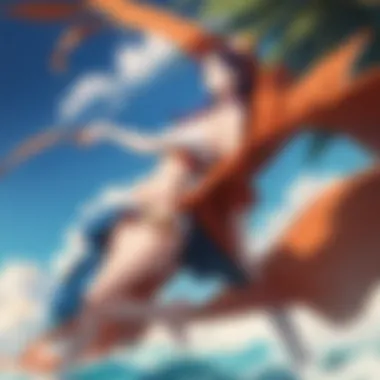

One Piece has established a robust merchandising framework that continues to thrive. From detailed action figures to wearables, the franchise capitalizes on its rich character roster. Collectibles ranging from Luffy’s straw hat to themed merchandise representing the Straw Hat Pirates are popular amongst enthusiasts. Moreover, the anime's existence isn't limited to standard goods.
Various spin-off series, including novels and manga adaptations, contribute to expanding the One Piece universe. These additional narratives provide fans with new insights into beloved characters and unexplored story arcs. For instance, the one-shot manga variations offer alternative perspectives on popular stories. These diversions keep the fan base engaged and cultivate a vibrant community around the franchise.
Quote: "Merchandising in anime often becomes a significant revenue source, and One Piece exemplifies this trend, solidifying its presence in pop culture."
The diversity in merchandise appeals to a wide demographic. Fans of all ages can find something that resonates with their interests, thus ensuring One Piece remains relevant even outside of anime viewership.
Video Games and Collaborations
The video game adaptations of One Piece afford fans avenues for interactive experiences. Games like One Piece: Pirate Warriors and One Piece: Burning Blood merge action-packed gameplay with engaging storylines, attracting both gamers and series aficionados. The combination of compelling narratives and dynamic gameplay mechanics results in an immersive experience that allows players to embody their favorite characters.
Moreover, collaborations extend One Piece's reach into other entertainment territories. Collaborations with brands such as Bandai Namco have birthed successful titles that leverage the beloved characters and world of One Piece. These crossovers also bridge One Piece with other beloved franchises, enticing new fans and providing fresh content for existing followers.
In short, the impact of One Piece in popular media is substantial. It not only drives merchandise sales but also stimulates collaborations that enrich the viewing experience, further entrenching this legendary series into the fabric of global pop culture. Through various media channels, One Piece sustains its legacy while continually attracting a diverse audience.
The Fan Community of One Piece
The fan community around One Piece plays a significant role in shaping the experience associated with this iconic series. This community is not just a collection of viewers or readers; it is a vibrant ecosystem of passionate individuals who share their insights, theories, and creativity. Engaging in this community offers numerous benefits, including a deeper understanding of the series and an enhanced appreciation of its complexities.
Fans often connect over shared interests, discussing plot developments, character arcs, and thematic elements. Online platforms such as Reddit and Facebook have become hubs for these discussions, where enthusiasts can dissect episodes or chapters and speculate about future events. The importance of the fan community extends beyond mere discussion; it fosters a sense of belonging among its members and creates opportunities for collaboration and creativity.
Additionally, the community is characterized by its evolution alongside the series. As new arcs and characters are introduced, fans adapt and build upon their existing theories. This dynamic nature keeps the conversations lively and intriguing, ensuring that each new piece of content revitalizes discussions and theories that may have been dormant.
"The One Piece community exemplifies how collective passion can enrich the experience of storytelling, transforming personal enjoyment into shared exploration."
Fan Theories and Speculations
Fan theories regarding One Piece are a hallmark of the community's engagement. These theories range from plausible interpretations of character motivations to more elaborate predictions about the series' ultimate conclusion. Fans speculate about everything from the significance of Luffy's straw hat to potential revelations about the Void Century. Such theories often lead to intense discussions, but they also serve to unite the community as they analyze clues woven throughout the narrative.
The speculative nature of fandom is encouraged by the series itself. Eiichiro Oda, the creator of One Piece, is known for incorporating intricate plot details that reward careful observation. Fans often discuss theories on forums and social media, dissecting panels and conversations for hints of what may come next. Engaging with these theories allows fans to feel more connected to the story, as they actively participate in piecing together the narrative puzzle.
Conventions and Gatherings
Conventions and gatherings dedicated to One Piece are pivotal in fostering community bonds. Events such as Anime Expo or Comiket showcase not only merchandise but also provide a platform for fans to interact face-to-face. These gatherings allow fans to celebrate their shared passion through cosplay, panels, and group activities.
At these events, attendees often share their interpretations of characters, discuss their favorite arcs, and even participate in trivia competitions. The atmosphere is charged with enthusiasm, bringing fans together from diverse backgrounds, further strengthening the community's ties.
In addition to traditional conventions, virtual events have also emerged, especially in light of global circumstances. Online gatherings enable fans from across the globe to connect and share their love for One Piece, illustrating the community’s adaptability. Whether in-person or online, these events are crucial to sustaining the vibrancy of the One Piece fan community.
Culmination
The conclusion of this article encapsulates the significance of One Piece within the broader anime and manga landscape. It serves to summarize the multifaceted aspects explored throughout the piece, highlighting the series' lasting legacy and potential future.
Legacy of One Piece
One Piece stands as one of the most prominent and beloved anime series globally. Its often praised narrative depth and character complexity have set a benchmark in the industry. The storytelling intertwines humor, drama, and adventure in remarkable ways, making it a significant work that appeals to a diverse audience.
The series has influenced numerous creators and has inspired a generation of anime enthusiasts. With over a thousand episodes and chapters, it demonstrates consistent quality and ingenuity. This longevity ensures that One Piece not only remains relevant but continues to shape the future of anime. Influences can be seen in modern series that attempt to mimic its unique blend of character-driven stories and intricate world-building.
"One Piece is more than an anime; it is a cultural phenomenon that transcends borders and generations."
Moreover, the community surrounding One Piece enhances its legacy. Fans engage through various mediums such as fan art, theories, and discussions at conventions. This interaction cultivates an environment where creativity and exploration thrive, further solidifying One Piece's place in popular culture.
Future Directions for the Series
As One Piece progresses, numerous possibilities unfold for its future. The ongoing narrative arc promises to delve deeper into the lore of the world, revealing more about the enigmatic Void Century and the One Piece itself. Characters are maturing and evolving, suggesting that future arcs could focus on their transformation and relationships.
The anime's adaptation continues to expand, drawing in fresh audiences while satisfying long-time fans. As technology advances, so does the potential for new animation techniques that could enrich the storytelling experience. Collaborations with international creators may also pave the way for adaptations in different formats.
Furthermore, the rise of the digital medium offers an opportunity for One Piece to reach new demographics worldwide. Social media platforms, streaming services, and e-commerce can enhance accessibility and engagement.
Ultimately, One Piece is set to remain a cornerstone of the anime industry. With its deep-rooted themes and intricate narrative, the series has much more to offer as it embraces the changing landscape of entertainment.







